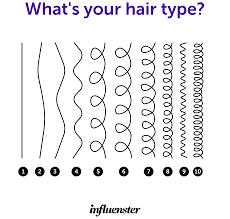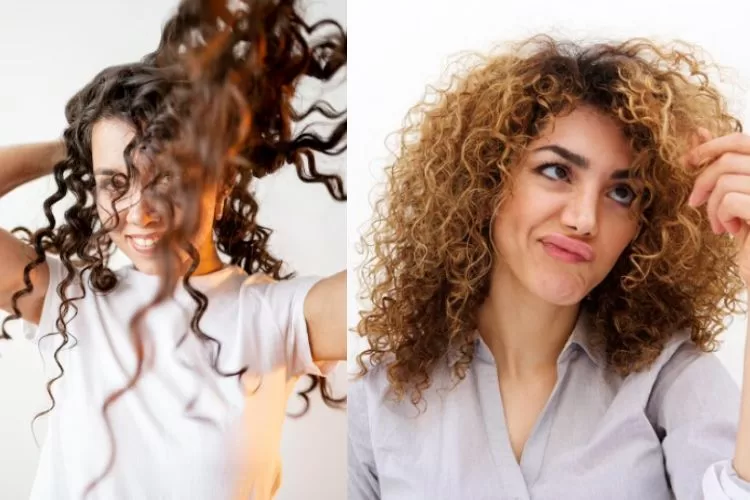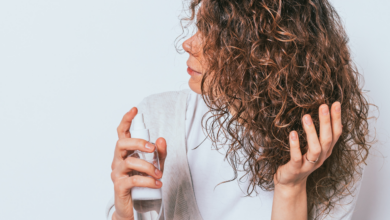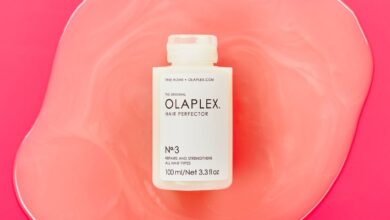
In “Unlocking The Secrets Of Your Hair Type: A Comprehensive Guide,” you’ll discover an all-inclusive resource that will revolutionize your hair care routine. Packed with invaluable information and expert advice, this guide provides everything you need to know about understanding and embracing your unique hair type. From unruly curls to fine and straight locks, this comprehensive guide will empower you to unlock the secrets of your hair type, helping you achieve beautiful, healthy, and luscious hair like never before. Say goodbye to bad hair days and hello to your most fabulous self with this must-have guide for all hair types.

Understanding Hair Types
An Overview of Hair Types
When it comes to understanding our hair, it’s important to know that not all hair is the same. Hair can vary in texture, structure, and even porosity. These factors play a significant role in determining the best way to care for and style your hair. In this comprehensive guide, we will explore the different hair types and provide you with valuable insights into how to embrace and enhance your natural hair.
Understanding the Different Hair Structures
Before we dive into the specifics of each hair type, let’s take a moment to understand the different hair structures. Hair is mainly composed of a protein called keratin, which is arranged in three layers. The inner layer is known as the medulla, followed by the cortex, and the outermost layer is called the cuticle. This layered structure forms the foundation for how our hair looks and behaves.
Identifying Your Hair Type
Now that we have a basic understanding of hair structures, let’s move on to identifying your hair type. The four main hair types are straight, wavy, curly, and kinky. Determining your hair type can help guide your hairstyling and hair care routines. When identifying your hair type, consider your hair’s natural pattern and texture when it is in its untouched state.
The Role of Genetics in Hair Type
Genetics play a significant role in determining your hair type. The genes inherited from your parents can influence the texture, thickness, density, and curl pattern of your hair. Understanding the genetic factors that contribute to your hair type can provide valuable insights into how to care for and style your hair.
Straight Hair
Characteristics of Straight Hair
Straight hair is characterized by hair strands that have little to no wave or curl pattern. It tends to be naturally smooth and shiny due to its straight structure. Straight hair is often associated with being sleek, manageable, and easy to style.
Hair Care Tips for Straight Hair
Taking care of straight hair requires a balance of moisture and gentle cleansing. Use a mild shampoo and conditioner that suits your hair type to maintain its natural shine and prevent it from becoming too greasy or weighed down. Avoid heavy styling products that can weigh down your hair and opt for lightweight serums or mousses instead. Additionally, regular trims can help maintain healthy-looking straight hair by preventing split ends.
Styling Options for Straight Hair
Straight hair offers a variety of styling options. From a sleek and straight look to voluminous curls created with heat styling tools, the possibilities are endless. If you want to enhance your naturally straight hair, consider using a straightening iron or investing in a professional keratin treatment for a longer-lasting sleek look. Experimenting with different hairstyles and accessories can also add flair and versatility to your straight hair.
Wavy Hair
Characteristics of Wavy Hair
Wavy hair falls in between straight and curly hair. It has a natural S-shaped wave pattern that gives it volume and bounce. Wavy hair is known for its versatility, as it can easily be styled into loose curls or left to air dry for a beachy, effortless look.
Hair Care Tips for Wavy Hair
Maintaining wavy hair requires a balance of hydration and styling products that enhance its natural texture. Use a moisturizing shampoo and conditioner to keep your waves soft and defined. Consider applying a leave-in conditioner or curl-enhancing cream to enhance your hair’s natural wave pattern. Additionally, avoid excessive brushing or combing, as it can cause frizz and disrupt the natural wave formation.
Enhancing and Styling Wavy Hair
To enhance your wavy hair, embrace air drying for a tousled, beachy look. Apply a texturizing spray or sea salt spray to add volume and definition to your waves. If you prefer a more polished style, you can use a diffuser on low heat to dry your hair while scrunching it gently. Experimenting with braids, updos, or half-up hairstyles can also showcase the beauty of wavy hair.
Curly Hair
Characteristics of Curly Hair
Curly hair is known for its spiral or coiled shape, resulting in natural curls that range from loose to tight. This hair type tends to be voluminous, full-bodied, and prone to frizz. Curly hair is often the envy of those with other hair types, as it is incredibly versatile and can create stunning looks with minimal effort.
Hair Care Tips for Curly Hair
Curly hair requires extra moisture and conditioning due to its natural tendency to be drier. Opt for a sulfate-free shampoo and a rich, moisturizing conditioner to keep your curls hydrated and prevent them from becoming frizzy. Consider incorporating weekly deep conditioning treatments to nourish and restore your curly locks. Scrunching your hair with a microfiber towel or cotton t-shirt can help maintain your curls’ shape and minimize frizz.
Enhancing and Styling Curly Hair
To enhance your curly hair, try using a curl-enhancing mousse or gel to define your curls and minimize frizz. Avoid brushing your curls when they are dry, as it can disrupt the natural curl pattern and create unwanted frizz. Instead, use your fingers or a wide-toothed comb to gently detangle your hair when it is wet and saturated with conditioner. Experiment with different hairstyles, such as updos, braids, or pineapple ponytails, to showcase your stunning curls.

Kinky Hair
Characteristics of Kinky Hair
Kinky hair, also known as afro-textured or tightly coiled hair, is characterized by its tight curl pattern. This hair type is often densely packed, giving it volume and a unique texture. Kinky hair requires special care and attention to keep it moisturized and healthy.
Hair Care Tips for Kinky Hair
Moisture is key when it comes to caring for kinky hair. Opt for moisturizing shampoos and conditioners that cater specifically to curly and kinky hair types. Regular deep conditioning treatments are essential to keep your hair hydrated and prevent breakage. Avoid excessive heat styling and embrace protective hairstyles, such as braids or twists, to minimize manipulation and promote hair growth.
Styling Options for Kinky Hair
Kinky hair offers a wide range of styling options. Experiment with different protective hairstyles, such as buns, coils, or updos, to protect your hair and showcase its unique texture. If you prefer to wear your hair down, consider using natural oils or curl-defining creams to enhance your curls’ definition and shine. Embrace accessories like headbands, scarves, or hair clips to add a personal touch to your kinky hair.
Oily Hair
Understanding Oily Hair
Oily hair, also known as greasy hair, is characterized by excessive sebum production, which can leave the hair looking and feeling greasy shortly after washing. Oily hair can be a result of various factors, including genetics, hormonal imbalances, and overactive sebaceous glands.
Causes of Excessive Oil Production
Excessive oil production can be caused by several factors. Hormonal changes, such as puberty or certain medical conditions, can trigger increased sebum production. Over-washing or using harsh shampoos can also strip the scalp of its natural oils, leading to rebound oil production. Additionally, certain dietary habits or stress levels can contribute to excessive oiliness.
Managing and Treating Oily Hair
Managing oily hair requires a gentle and balanced hair care routine. Use a clarifying shampoo once or twice a week to remove excess oil and build-up from the scalp. Avoid over-brushing or touching your hair too frequently, as it can distribute the oils and make your hair look greasier. Consider using dry shampoos or oil-absorbing powders in between washes to extend the time between washes and keep your hair looking fresh. Additionally, incorporating a healthy diet and managing stress levels can help regulate oil production.

Dry Hair
Understanding Dry Hair
Dry hair lacks moisture and natural oils, making it feel rough, brittle, and prone to breakage. It can be caused by various factors, including genetics, environmental factors, excessive heat styling, and over-washing.
Causes of Dryness and Dehydration
Several factors can contribute to dry and dehydrated hair. Excessive heat styling, such as frequent use of hot tools, can strip the hair of its natural moisture and cause it to become dry. Environmental factors like sun exposure, harsh climate, or chlorine in swimming pools can also dehydrate the hair. Additionally, over-washing or using harsh shampoos can strip the hair of its natural oils, leading to dryness.
Moisturizing and Nourishing Dry Hair
Moisture is crucial for restoring and maintaining dry hair. Use a moisturizing shampoo and conditioner specifically formulated for dry and damaged hair. Incorporate a deep conditioning treatment into your hair care routine at least once a week to provide intense hydration and nourishment. Avoid excessive heat styling and protect your hair from environmental factors by wearing a hat or using a leave-in conditioner with UV protection. Additionally, incorporating a healthy diet rich in omega-3 fatty acids and staying hydrated can contribute to overall hair health and moisture.
Fine Hair
Characteristics of Fine Hair
Fine hair refers to individual hair strands that have a smaller diameter compared to other hair types. It is often described as lightweight, delicate, and lacking volume. Fine hair can be easily weighed down by heavy products or become limp and flat throughout the day.
Hair Care Tips for Fine Hair
Caring for fine hair requires products and techniques that add volume and prevent your hair from looking limp. Use a volumizing shampoo and conditioner that add body without weighing your hair down. Avoid heavy styling products and opt for lightweight mousses or sprays that provide lift and texture. When washing your hair, be gentle to avoid breakage and use a wide-toothed comb to detangle your hair when it is wet.
Volumizing and Styling Fine Hair
To add volume and dimension to fine hair, consider incorporating volumizing techniques into your styling routine. Use a root-lifting spray or mousse at the roots to create lift and bounce. Blow-dry your hair upside down or use a round brush to create natural-looking volume. Experiment with different hairstyles, such as loose waves or tousled updos, to give the illusion of fuller, thicker hair.

Thick Hair
Characteristics of Thick Hair
Thick hair refers to a high density of hair strands on the scalp, resulting in a full and voluminous appearance. It is often described as strong, durable, and resistant to breakage. However, thick hair can also be challenging to manage and style due to its volume and density.
Hair Care Tips for Thick Hair
Managing and caring for thick hair requires techniques that help maintain its health and prevent tangling. Use a moisturizing shampoo and conditioner that provide hydration without weighing your hair down. Regular deep conditioning treatments can help keep your hair soft, manageable, and less prone to breakage. Consider using a wide-toothed comb or detangling brush to gently work through any tangles or knots.
Managing and Styling Thick Hair
To manage thick hair, consider incorporating techniques that help tame its volume and promote manageability. Opt for layered haircuts that remove some of the weight from your hair and provide movement and shape. Embrace air drying or using a diffuser to enhance your hair’s natural texture without adding excessive volume. Experiment with various hairstyles, such as braids, ponytails, or updos, to showcase the beauty of your thick hair.
Hair Porosity
Understanding Hair Porosity
Hair porosity refers to the hair’s ability to absorb and retain moisture. It is determined by the hair’s cuticle structure and can be categorized into three types: low porosity, medium porosity, and high porosity. Understanding your hair’s porosity is essential for developing an effective hair care routine.
Low Porosity Hair
Low porosity hair has a tightly packed cuticle layer, making it resistant to moisture absorption. It often takes longer for low porosity hair to dry and may be prone to product build-up. To care for low porosity hair, use lightweight, water-based products that can penetrate the cuticle. Incorporate heat during deep conditioning treatments or use steam to open up the cuticle and allow for better product absorption.
Medium Porosity Hair
Medium porosity hair has a cuticle layer that allows for optimal moisture absorption and retention. It is considered the ideal porosity level, as it requires less maintenance compared to low or high porosity hair. To care for medium porosity hair, use products specifically formulated for your hair type and aim for a balanced hair care routine that provides moisture and nourishment without overwhelming the hair with products.
High Porosity Hair
High porosity hair has a cuticle layer that is more open and prone to damage, making it highly absorbent but also susceptible to moisture loss. High porosity hair often appears dry, frizzy, and requires extra care to maintain moisture balance. To care for high porosity hair, use deeply nourishing and moisturizing products that help repair and strengthen the hair’s cuticle. Seal in moisture using oils or butters, and protect your hair from harsh environmental factors by using protective hairstyles or accessories.
Tips for Caring for Different Porosities
Regardless of your hair’s porosity, incorporating regular deep conditioning treatments into your hair care routine can help improve and maintain optimal moisture levels. When using hair products, consider applying them to damp hair rather than soaking wet or completely dry hair. This allows for better product absorption and utilization. Lastly, listen to your hair and adjust your hair care routine as needed. Pay attention to how your hair responds to different products and techniques to find what works best for your specific hair porosity.
Understanding your hair type, structure, and porosity is the key to unlocking the secrets of your hair. Armed with this knowledge, you can tailor your hair care routine to address the specific needs of your hair, enhancing its natural beauty and achieving your desired style. Embrace your natural hair type, experiment with different products and styles, and remember that your hair is unique and beautiful – just like you!

Mielle Organics Rosemary Mint Shampoo Review(Opens in a new browser tab)
L’Oréal Paris Elvive Hyaluron Moisture Shampoo 400ml Twin Pack Review(Opens in a new browser tab)
TRESEmmé Keratin Smooth Shampoo Review(Opens in a new browser tab)




